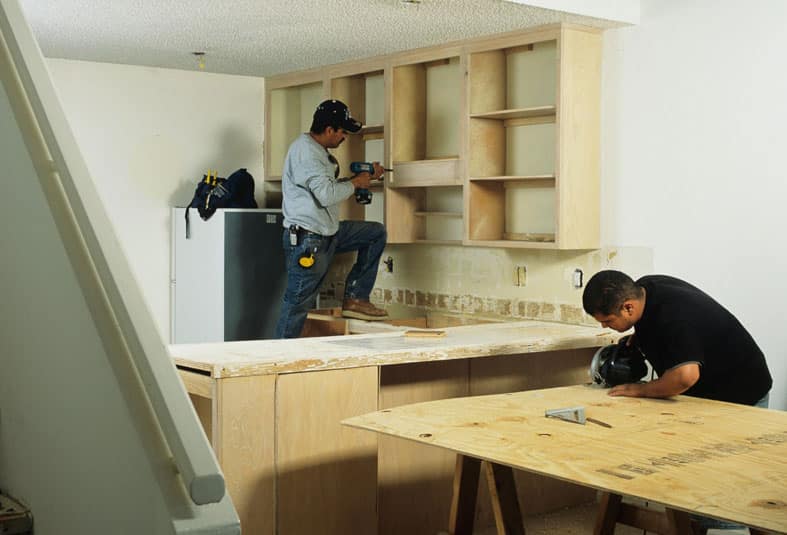Renovating properties is clearly a popular way for many people looking to increase the value of a property they own. How popular? Well, a simple google search of “property renovation tips” returned 50,400,000 results. People really see the need to get great information on tips and the latest trends. We certainly agree that it is important to get expert advice on the “how to” when it comes to renovating and Google may well be a great starting point.
But let’s get more specific and look at renovating investment properties. The “how to” is still very important but now there is a bigger consideration…tax implications.
Unfortunately, tax is often one of the last things that people think about when it comes to renovating investment properties. Usually, that comes at a significant cost and impact on profit and cash flow.
Investment property tax implications can affect capital gains and income taxes and even GST. So, to avoid any nasty surprises we always suggest getting some expert advice before starting the renovations and then you can plan the best strategy.
As a thought-starter, below we share our take on a recently published CPA Australia article by Stephen Jones CPA (ATM Consultants) that sheds some light on tax implications for renovating investment properties. Jones outlines five key tax considerations for investors planning to renovate their properties.
1. Repairs or Renovation? Important cash flow implications
To the ATO these are very different beasts and can significantly impact on the cash flow for any investment property. This can be a bit of a gray area so expert advice is essential.
Repairs are considered maintaining what is there already – for instance, repairing a hot water heater or repainting the property.
- Repairs are generally a deductible expense, so can be deducted from the investor’s present year’s income.
Renovations may be an improvement but not necessarily just a major construction job. Replacing old lino with carpet, for instance, would count as a renovation.
- Renovations are usually a capital expense and may be able to be depreciated over time.
- plant and equipment, such as a new stove for instance, then they can be depreciated over the useful life of that item.
- actual construction is treated under a separate division of the tax act and has to be written off over 40 years at 2.5 percent a year
- If the property is sold sooner, then the remaining capital costs are used to calculate the cost base of the investment, reducing the amount of capital gains tax payable.
2. Repairs – timing can be everything
This is an important issue for newly acquired investment properties before having an actual paying tenant.
Repairs are deductible because they are fixing wear and tear caused by the tenants.
Doing repairs before there is a paying tenant would be considered as “initial repairs” and be treated as a capital expense. These expenses would then be depreciated over a period specific to that expense and could not be claimed as an immediate income tax deduction.
Tax considerations aren’t the only thing at play here as without these repairs it may be hard to attract a good tenant.
It becomes a judgment call when deciding how much to repair a property before a tenant moves in.
3. Repairs or Renovation? Keep detailed records
Heard the saying “the Devil is in the detail”, well it very much applies to the gray areas of the “Repairs or Renovation” tax treatment.
Some parts of what might be considered a renovation, for example. adding a new room (renovation) might also involve repainting existing rooms (repairs).
Keeping detailed records (receipts etc.) allow for these renovation/repair costs components to be identified and claimed separately for tax purposes.
Not only that but keeping clear records for those renovations (capital expenditures) is important for adjusting the capital gains cost base if you sell the property before that expense has been fully depreciated.
4. Renovations – know the $300 deduction rule
When discussing “Repairs versus renovations” in point 1 above we identified that renovations are treated as capital expenditure and therefore not immediately deductible but rather are depreciated over the life of the asset.
Good news – if the cost of that capital item is less than $300 then it is immediately deductible. This can apply to items such as light fittings.
So, there are advantages in keeping purchases under that $300 threshold.
It may even be feasible to buy smaller items individually rather than in one combined purchase. However, this won’t always be accepted, particularly if those assets are bought as part of a set costing more than $300.
5. Consider the GST implications
GST is a tax that is payable when a taxable item is sold. In the context of what we are discussing here, GST applies to the sale of:
- Newly built houses
- Houses deemed to have had “significant renovations” could make the property subject to GST as well.
What “significant renovations” mean exactly is rather uncertain, but as a rough guide, Jones says moving around non-loadbearing walls within the property is probably okay but adding rooms or another storey could be regarded as significant renovations.
Conclusion
We understand investment properties often represent a significant portion of a client’s investment strategy. Decisions around repairs and renovations can result in some costly mistakes when it comes to how these are treated by the ATO.
If you want to avoid any nasty surprises getting the right advice is crucial. Here at Carbon Group, we specialise in advising on tax considerations for property investors. Get in touch and see how we can help today.





















